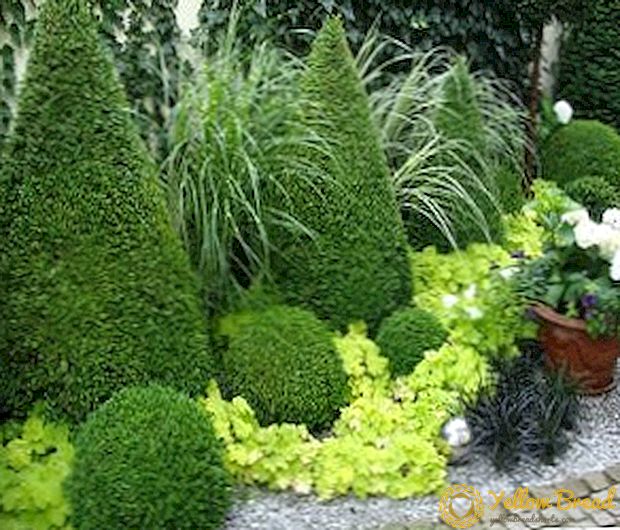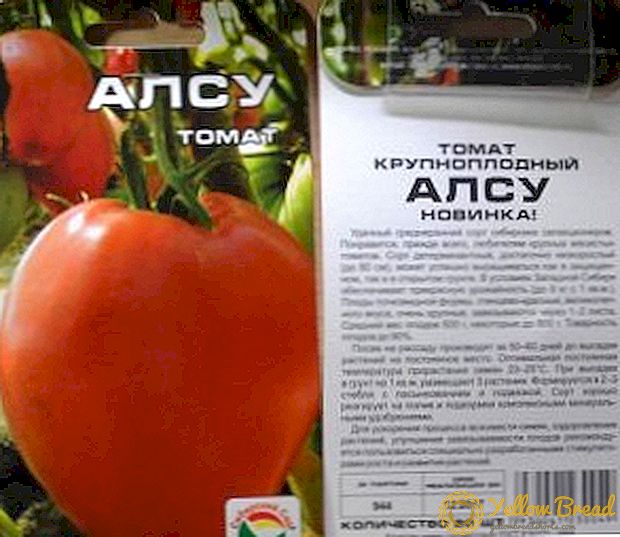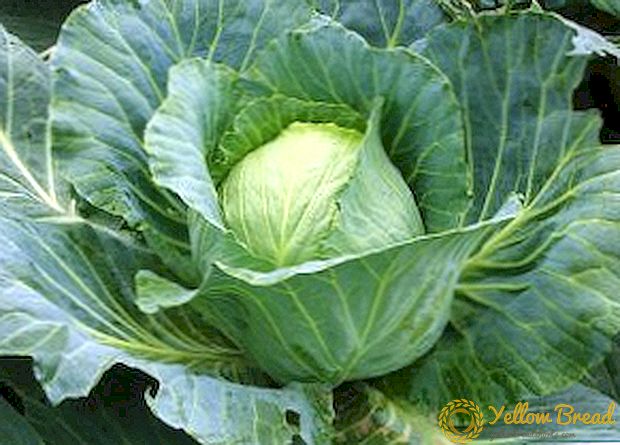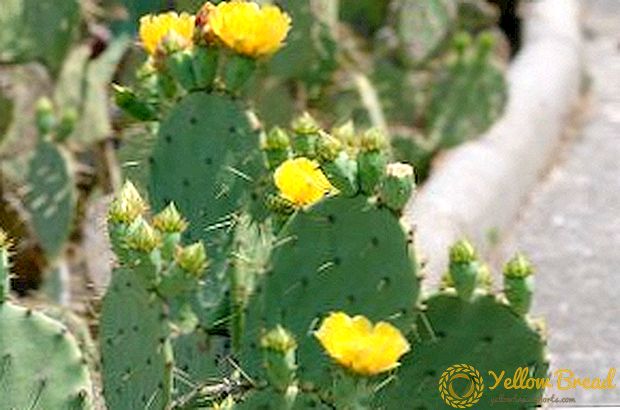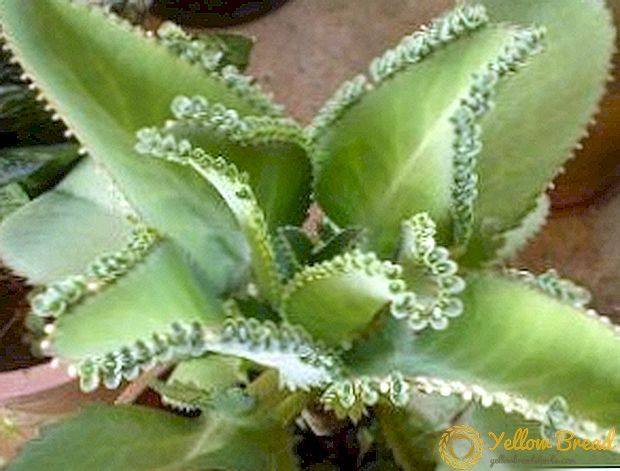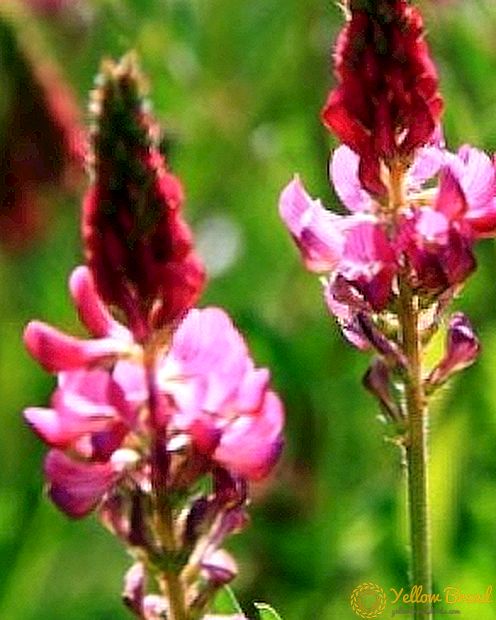 Most people do not know the name of this culture. The sainfoin plant is one of the best forage and melliferous crops. Esparcet is characterized by healing properties. Among the rural population this culture is being called a bunny pea.
Most people do not know the name of this culture. The sainfoin plant is one of the best forage and melliferous crops. Esparcet is characterized by healing properties. Among the rural population this culture is being called a bunny pea.
The plant belongs to perennial crops, the height grows to one meter. Esparcet is a culture of the legume family. In sowing espartse contains many useful vitamins and amino acids. In this article you will read and learn a lot of interesting things about this culture.
- A little about the culture Esparcet
- Seed preparation for sowing
- Sowing dates of a sainfoin
- The seeding rate of culture
- Soil preparation for salvage
- What fertilizers are needed for the crop?
- Methods of sowing sainfoin
- Caring for sainfoin
- Features of growing sainfoin for seed
- What pests and diseases are dangerous for sainfoin
- What measures should be taken in the fight against diseases?
A little about the culture Esparcet
There are three types of sainfoin that can be grown: sandy, sowing and Transcaucasian.
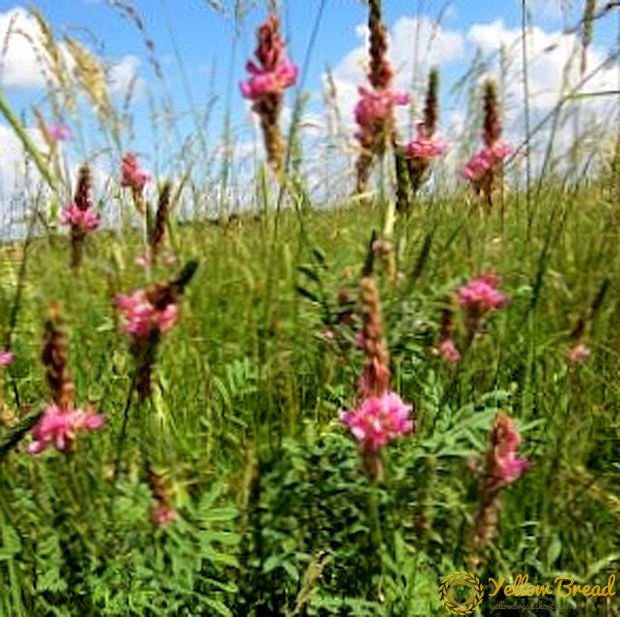 About sandy espartzet can be said that it tolerates frequent change of weather conditions.It is characterized by winter hardiness, drought resistance, less prone to diseases and pests than other types of culture.
About sandy espartzet can be said that it tolerates frequent change of weather conditions.It is characterized by winter hardiness, drought resistance, less prone to diseases and pests than other types of culture.- It is possible to say about the sowing sainfoin, which is the most common type of this culture. But in recent years, its yield is reduced in comparison with sandy sainfoin.
- It is possible to say that this species is more protective of the Transcaucasian salvage. Transcaucasian Esparcet quickly germinates about 7-10 days and grows. But this species has a drawback - it is a small winter hardiness.
Seed preparation for sowing
Before planting, seeds must first be prepared. They must be pickled and treated with molybdenum.
 Before sowing their seeds, they are inoculated with nitragin. All this must be done directly on the day of sowing, and the day before it is diluted with a solution of nitragin, in the amount of 0.5 liters per 10 kilograms of seeds. Then, without allowing the solution to settle, the semenp is poured into it and mixed very well. Then a little dried seeds are sown.
Before sowing their seeds, they are inoculated with nitragin. All this must be done directly on the day of sowing, and the day before it is diluted with a solution of nitragin, in the amount of 0.5 liters per 10 kilograms of seeds. Then, without allowing the solution to settle, the semenp is poured into it and mixed very well. Then a little dried seeds are sown.
If you do not have a factory nitragin, it is possible to prepare it from nodules made from sediment herb sedimentation.On 1 hectare about 100-200 dry roots with tubers which were harvested since autumn are required. You can also use roots with old-growth tubers, or take the ground with tubers and small roots.
On your chosen day of sowing, the seeds need to be treated with boron, this is necessary for a good exchange of carbohydrates, improvement of pollen life, for better fertilization and the formation of beans and seeds. Molybdenum increases the nitrogen-fixing ability of nodule bacteria, and accordingly increases the productivity of seeds. Boric acid is used at the rate of 40-50 g / c of seeds, and molybdenum from 300 to 400 g / c of seeds.
Sowing dates of a sainfoin
 This plant is almost always sown on spring grain plants. Due to the difference in seed size from other perennial grasses, it is possible to sow sainfoin along with earlier cereal crops. In a later period of sowing, sainfoin can be sown together with millet. In the summer period, the optimal variant will sow sainfoin in the last decade of July or in the first days of August.
This plant is almost always sown on spring grain plants. Due to the difference in seed size from other perennial grasses, it is possible to sow sainfoin along with earlier cereal crops. In a later period of sowing, sainfoin can be sown together with millet. In the summer period, the optimal variant will sow sainfoin in the last decade of July or in the first days of August.
In some years, you can use fresh seeds for planting crops, because they have enough 8-10 days air heat heating to ripen. When sowing sandy sainfoin, its consumption should be 50-60 kg / ha, and sowing sainfoin will require 60-75 kg / ha. When sowing grass mixture, the number of seeds is reduced to 35-40 kg / ha.
If you are going to sow sainfoin only in a well-known pair for one year, then you should use single-species crops. On fields or on slopes, spicetts should be sown together with grass grasses, such as awnless bonfires, wheatgrass and other grasses. The depth at which it is worth sowing culture ranges from 3 to 6 centimeters, it depends on soil moisture.
It is very important to know that during harvesting of a plant it is necessary to leave a stubble at least 20 centimeters. The sufficient height of the stubble protects the esparzet from the hot scorching sun in summer, and in winter it increases the snow content, which increases the likelihood of a good wintering of the crop and an additional source of increase in moisture in the soil.
The seeding rate of culture
Depending on the methods of sowing culture, there are different norms of sowing seeds of sainfoin, which you will learn about below:
- - With an ordinary method of sowing sainfoin, you will need 50-60 kg / ha of seeds.
- - With a wide-row method of sowing a crop, you will need 20-30 kg / ha of seeds.
- - When sowing the crop, you will need 15-20 kg / ha of sainfoin, about six kilograms per hectare of alfalfa or clover, or about 10 kg / ha of meadow fescue.
Soil preparation for salvage
Preceding cultures
 Various crops can be used as precursors of sainfoin, because it is grown in field, fodder and soil crop rotation (for example, any grain crops, fodder roots and other crops).
Various crops can be used as precursors of sainfoin, because it is grown in field, fodder and soil crop rotation (for example, any grain crops, fodder roots and other crops).
The best option would be to grow sainfoin in fodder crop rotations. Excellent previous crops are those under which 60 to 80 tons / ha of organic fertilizer were applied.
Esparcet itself is also an excellent precursor for winter wheat, sugar beet and many other crops.
As well as other legumes, Esparcet is responsive to increasing the depth of the arable layer to 25 centimeters. Autumn tillage should be carried out depending on its contamination.
Tillage land
Esparcet does not need fertile soils, therefore, when choosing a plot under sainfoin, you can decide on poor soils: sandy and sandy, on soils that have moraine loam, lime, on eroded and cartilaginous-gravel soils, in general, those on which other crops are not give good yields.
But still the most suitable land for sainfoin is medium and light soils by mechanical composition - loam light and medium, shallow sandy loam. Good yards of sainfoin can be achieved on lands with a normal moisture regime. Culture can not be sown on wet, poorly drained and permeable soils, on acidic lands, as well as on salty soils a good harvest will not work. Normal acidity should range from 6.5 to 7.0 pH.
The most important requirement for the earth is that the reaction of the dedicated medium is necessary to be neutral or to be close to neutral.Therefore, it is precisely because of this peculiarity that it is necessary to make liming of the soil with large doses of lime material (approximately from 6 to 12 t / ha of dolomite flour, its quantity depends on the acidity).
Cultivation of land depends on the culture of the precursor, the type of soil, soil contamination and meteorological conditions. Obligatory agrotechnical measures are: leveling the ground, rolling both pre-sowing and post-sowing. Before sowing seeds of sainfoin, the soil should be cleaned of weeds, even without any lumps, and there should be a dense bed at the depth of seeding.
What fertilizers are needed for the crop?
 The amount of fertilizer applied depends on the future crop yield and on the nutrients contained in the soil.
The amount of fertilizer applied depends on the future crop yield and on the nutrients contained in the soil.
In order to get a good harvest of sainfoin in the future, it is necessary to apply organic fertilizers in the amount of from 60 to 80 tons / ha for the crops of the predecessors. The application of nitrogen fertilizers depends on the cover crop and the applied dose of fertilizer should not cause lodging of the crop.
Only emerging shoots and germinating seeds are very susceptible to ammonia nitrogen. In order to avoid the situation of the death of the plant that has appeared, liquid nitrogen cannot be introduced in any way.
Fertilizers containing phosphorus and potassium are the main feed of the crop, as well as they are applied after harvesting. Fertilizer fertilizers in the main feeding make in the amount of 45-90kg / ha ai, and 45-60 kg / ha ai after cleaning. Potash fertilizer in the main refueling 90-120 kg / ha ai, and in top dressing 60-90 kg / ha ai
You need to know what you need to make when sown from 10 to 15 kg / ha a.v. phosphorus in the form of superphosphate.
Boric fertilizers should be applied in amounts of up to 2 kg / ha of acid with boron, or with foliar feeding up to 500 g / ha. Ammonium molybdenum sulphate is introduced by foliar feeding to 200 g / ha.
Before sowing the culture, it is necessary to determine the acidity of the selected area and, if necessary, apply lime fertilizer in the amount of 0.75 - 1.0 hydrolytic acidity. When growing sainfoin on acid soils, liming measures are mandatory. On acidic lands, this culture grows very poorly and sometimes does not grow at all.In an acidic environment, nodule bacteria develop poorly, and the air nitrogen is poorly absorbed by cultures.
If the pH is less than 5.4, then the liming should be carried out 1-2 years prior to sowing of sainfoin, and if this figure is higher then lime is used during presowing cultivation. After the application of lime fertilizers, you need to make boron fertilizers, because after lime lime boron goes into hard-to-reach form.
Methods of sowing sainfoin
There are two ways of planting sainfoin:
- - Broad order.
- - Ordinary method.
If the selected field is not too littered with weeds, you can choose a clean crop.
The seeds of the crop are sufficiently large, so when sowing, you can use grain seeders.
The depth to which the seeds should be embedded is about 2-4 centimeters, depending on the type of soil. The ground must be leveled and rolled.
Caring for sainfoin
 The main agrotechnical event is the fight against soil crust. Before the emergence of seedlings, the formed crust must be removed with the aid of light harrows or a rotary hoe. Ribbed rollers should be used when emerging shoots can not break through the crust. The second time harrowing is carried out during the formation of the rosette of leaves.In the first year of life of the herbage, it is impossible to graze cattle, because this may very badly affect the culture.
The main agrotechnical event is the fight against soil crust. Before the emergence of seedlings, the formed crust must be removed with the aid of light harrows or a rotary hoe. Ribbed rollers should be used when emerging shoots can not break through the crust. The second time harrowing is carried out during the formation of the rosette of leaves.In the first year of life of the herbage, it is impossible to graze cattle, because this may very badly affect the culture.
In the first year of sowing, as well as in the following years, sainfoin needs a lot of moisture, so the plant must be provided with water. In the first year of life the plants do three watering. For the first time, a sainfoin is watered with small doses of water of about 400-500 m3 per 1 ha, in order to avoid the problem of flooding the culture. In subsequent years, the care of sainfoin includes harrowing with two heavy harrows. In order to maintain moisture in the soil and to ensure the access of oxygen to the roots, it is necessary to loosen the soil.
When cultivating a crop for hay, about 70% of PV is considered normal humidity. To maintain it next year, it is necessary to produce three irrigations: the first irrigation during spring regrowth, the second irrigation during bud formation, and the third irrigation a week before harvest.
At the second mowing it is necessary to make two waterings: the first watering after mowing, the second watering during the budding period. The irrigation rate should not be more than 500-600 m3 per 1 ha. During the entire use of the grass stand, it is imperative to carry out moisture accumulative autumn watering in the amount of 800-1000 m3 per 1 ha,this event will allow sainfoin to winter well.
If you decide to remove sainfoin on hay, then you need to do this during the formation of buds or at the beginning of flowering. If the harvest is carried out later, the protein content is reduced by 20%, hay becomes coarse, and therefore less eaten by animals. If you cut a sainfoin during flowering, then afterbirth is practically absent.
Features of growing sainfoin for seed
If moistening was carried out at the time, the testes can be selected from the general sowing. If there was a drought, then the best option would be to plant seeds in the summer period in the uncovered way. It is known that in summer crops in the Central Black Earth Region there is a higher seed yield as compared with the early spring sub-cover.
To get seeds, sainfoin is best sown in an ordinary way. In order to get fast reproduction of popular varieties, it is possible to sow in a wide-row way, because of this, the consumption of seeds is up to three times. The increase in yield is affected by bee-pollination.
What pests and diseases are dangerous for sainfoin
Pest and disease control should be carried out on seed crops.The most dangerous pests of culture are seed-eating. Beans and seeds are damaged by the Esparcet weevil. Here the larvae that appeared immediately gnaw through the wall of the bean and eat the contents of the seeds.
Seeds are damaged by up to 50%. The Eurytomy esparetsevach lays its eggs in the pulp of seeds, when the larvae appear, they immediately eat up the entire contents. The fan of grain cleaning machines can separate damaged seeds from healthy, healthy seeds that are heavier than unhealthy ones. All unhealthy seeds must be burned.
 The seed of the crop damages the sainfoin flower mosquito, the sainfoin flower beetle, the sainfoin thrips. The fight against them is allowed to wage chemicals. The fight against them is allowed to wage chemicals. In order to reduce the influence of nodule weevils, we must use the following methods: treat the seeds with molybdenum and nitrogyne, and then observe the isolation between old and new crops.
The seed of the crop damages the sainfoin flower mosquito, the sainfoin flower beetle, the sainfoin thrips. The fight against them is allowed to wage chemicals. The fight against them is allowed to wage chemicals. In order to reduce the influence of nodule weevils, we must use the following methods: treat the seeds with molybdenum and nitrogyne, and then observe the isolation between old and new crops.
The most known diseases of sainfoin are:
- - Mealy dew - leaves, stalks and beans suffer. This disease can reduce seed yield up to 50-70%.
- - Rust - leaves, stalks, beans and flower stalks suffer.Most often affects old-growth crops. This disease is very dangerous for the early phase of culture.
- - Fusarium - both terrestrial phytomass and roots suffer. With a large development of the disease, the plant completely dies.
What measures should be taken in the fight against diseases?
Here are some measures to combat diseases:
- - Correct crop rotations
- - Sowing resistant varieties of culture.
- - New crops should be placed away from old ones.
- - When sowing, it is necessary to use seeds less affected.
- - The affected areas need to be mowed earlier than healthy ones.
- - Post harvest residues must be destroyed.
The process of flowering and maturation in sainfoin stretched. Already ripe fruits can crumble. In order to protect the crop from losses, it is necessary to carry out separate cleaning. You need to know that the immature fruits ripen perfectly in the trees. But in the rain the seeds germinate easily in them. The optimal time for direct combining is browning of 80-85% of fruits.
Separate harvesting or direct combining is used depending on the weather, the availability of equipment and the presence of weeds.

 About sandy espartzet can be said that it tolerates frequent change of weather conditions.It is characterized by winter hardiness, drought resistance, less prone to diseases and pests than other types of culture.
About sandy espartzet can be said that it tolerates frequent change of weather conditions.It is characterized by winter hardiness, drought resistance, less prone to diseases and pests than other types of culture.